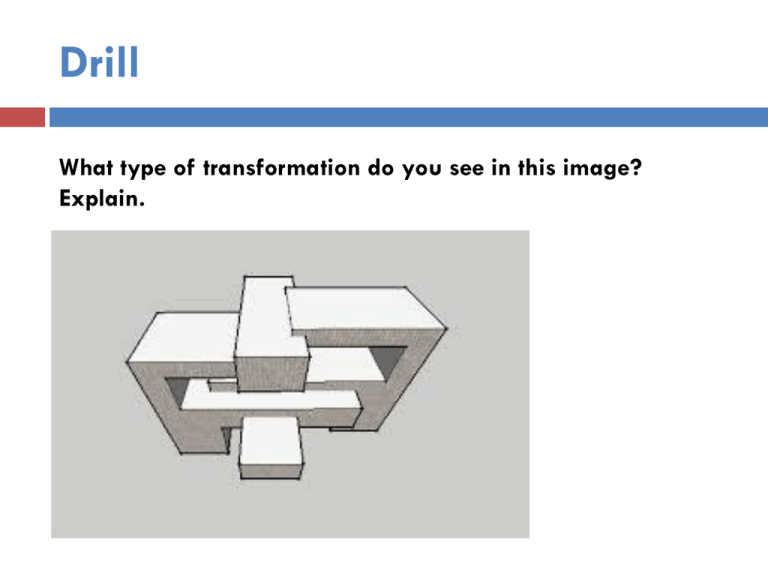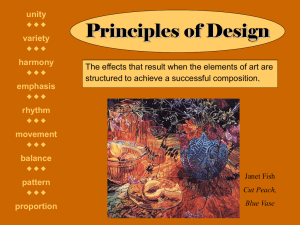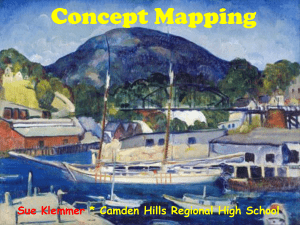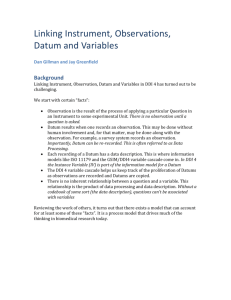1_4_2B Principles of Design
advertisement

Drill What type of transformation do you see in this image? Explain. APPLICATIONS OF TECHNOLOGY Principles of Design Architecture What is Architecture? Architecture is the art, science, and profession of planning, designing, and supervising the construction of new buildings, landscapes, communities, and furnishings in their totality, examining their environment in accordance with the principles of utility, strength, and aesthetics. What are some the Principles of Design? There are six (6) Principles of Design. You have already been introduced to one of them in the previous lesson. Transformation The following are the remaining Principles of Design. Axis Balance Rhythm Datum (Unity) Hierarchy (Contrast) Axis An axis is a line established by two points in space about which forms and spaces can be arranged in a symmetrical orbalanced manner. Teotihuacan (City of the Gods, Mexico Pyramids of the Sun &Moon, Avenue of the Dead, citadel, and market. Balance Symmetry: balanced distribution of equivalent forms, shapes, or spaces on opposite sides of a dividing line or plane, or about a center or axis Types of Symmetry • Bilateral • Radial • Asymmetry Balance Bilateral symmetry: one plane dividing the whole arrangement into identical halves Monticello, Thomas Jefferson Charlottesville, VA Balance Radial symmetry: similar halves at any angle around a centerpoint or along a central axis Villa Rotunda, Palladio Vicenza, Italy Balance The difference between Symmetry and Asymmetry Balance Asymmetry: creating visual balance without parts being identical Datum (Unity) Datum: line, plane, or volume that by its continuity and regularity serves to gather, measure, and organize a pattern of forms and spaces. Datum (Unity) It is hard to detect the notes and relative pitches of the music above without a staff. The staff is used as a datum to organize the spacing of notes and to accentuate the difference between a series of notes. Datum (Unity) Phillip Exeter Academy Library Louis Kahn Exeter, New Hampshire A volume can collect the pattern of elements within its boundary. Datum (Unity) A plane may gather elements or serve as a background for the encompassing elements and frame them in its field. Rhythm and Repetition Rhythm: unifying movement characterized by patterned repetition/alteration of forms/shapes in the same or modified form. Structural patterns incorporate repetition. Unite d’Habitation Le Corbusier Rhythm can be witnessed in the arrangement of rooms in this apartment building. Rhythm and Repetition Sydney Opera House, John Utzon Victorian Houses Sydney, Australia San Fransisco, California In the case of the Sydney Opera house, we witness reverberating patterns. The Victorian houses show multiple rhythms laid over one another in the façade of a building. Hierarchy (Contrast) Hierarchy: articulating the importance of a form/space by its size, shape, or placement relative to other shapes/forms of the organization. Hierarchy by Size Hierarchy by Shape Hierarchy by Placement Hierarchy (Contrast) Olivetti Training School James Stiling Haslemere, England Catherdral dominates urban landscape in Florence, Italy Hierarchy (Contrast) Legislative Assembly Building Le Corbusier Punjab, India Hierarchy may also be achieved through color.











